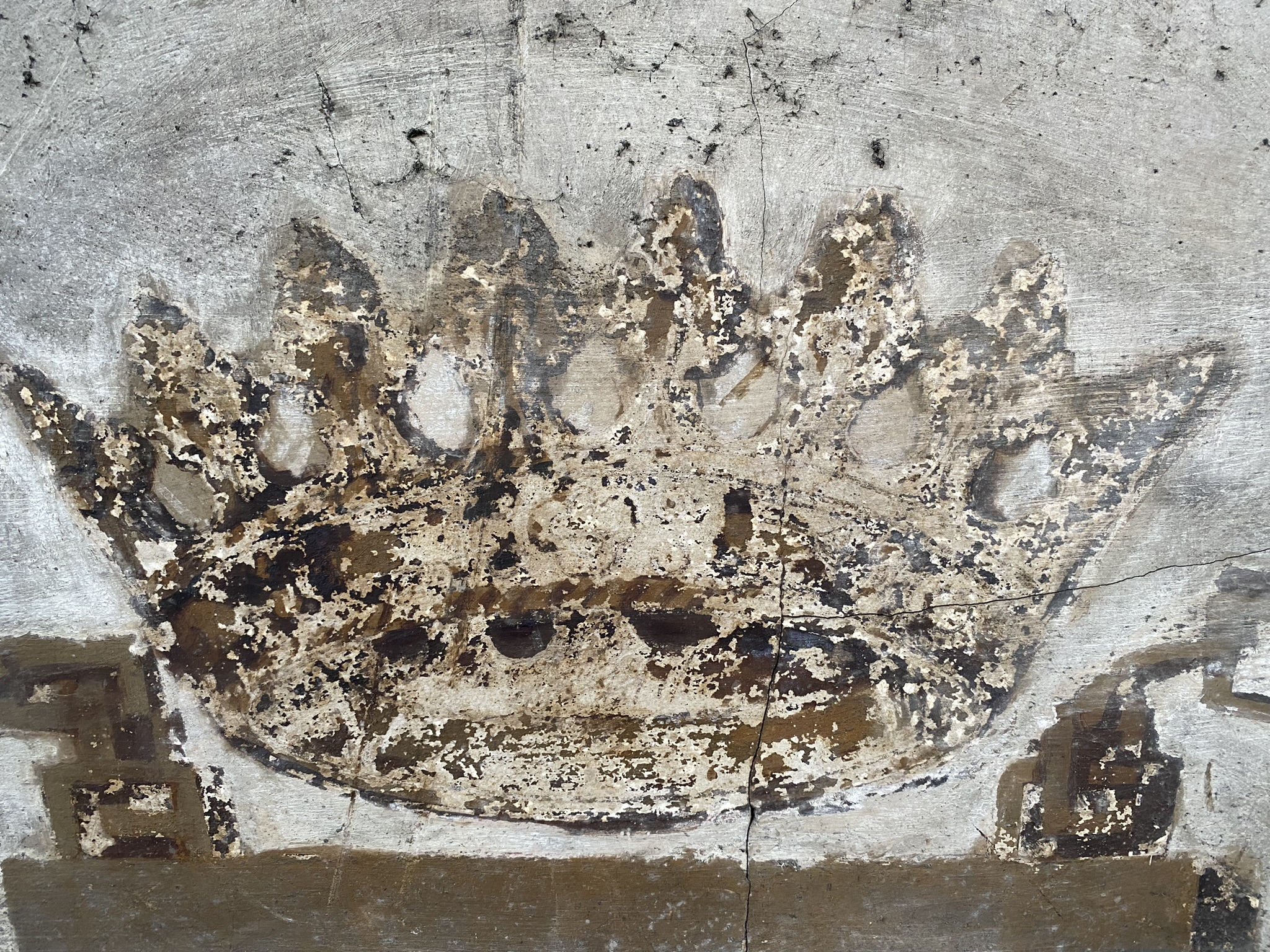
Ongoing restoration works at Christ’s College in Cambridge, the U.K., have turned up medieval wall paintings that have not been seen for nearly three centuries.
Discovered in a loft space at the Cambridge University college, in what was likely the northwest wall of its original library, the paintings feature three crowned motifs: a portcullis on the left, a deep red Lancastrian rose in the middle, and what looks like a fleur-de-lis on the right. Spanning six meters in width, the works are estimated to date from the early 16th century, when they were applied to a fine plaster layer with hints of limewash.
The wall paintings in the loft space, partially obscured by a joist. Photo: Tobit Curteis Associates LLP.
In particular, the portcullis was a badge of the Beaufort family, which produced the first Tudor monarch, Henry VII, who reigned from 1485 to 1509. The king’s mother, Lady Margaret Beaufort, re-founded Christ’s College in 1505, almost seven decades after it was first established as God’s House.
“This is a really exciting and unusual discovery,” said Christina Faraday, an art historian at the university, in a statement, “revealing the ways that the college celebrated and advertised its royal patron during the early years of the 16th century, following its re-founding.”
Faraday described Henry VII’s claim to the throne as “weak,” hence his use of heraldic icons to cement his reign and “promote his kingship.” The fleur-de-lis, for instance, had been used to represent English kings since Edward III.
Detail of the fleur-de-lis painting. Photo: Tobit Curteis Associates LLP.
The scarlet Lancastrian rose was another one of the king’s designs, likely devised following the Tudor house’s victory in the War of the Roses (1455–87), mirroring the white rose motif of the warring York house. When Henry VII and Elizabeth of York were wed in 1486, the roses were combined to form the Tudor rose.
According to the college, the works have been surprisingly well-preserved, possibly because of their covered location in the roof space. Even circles that were carved into the plaster using a compass around the Lancastrian rose remain evident.
“Such survivals are extremely unusual,” said Faraday. “Wall paintings were a relatively cheap and disposable form of decoration, and so were rarely deliberately preserved.”
The red Lancastrian rose with the imperial crown above. Photo: Tobit Curteis Associates LLP.
Since the discovery, the college has scoured its archives and learned that the last recorded sighting of the paintings was around 1738. The institution will engage specialists to conserve and protect the paintings, but does not plan to put them on view due to their fragile condition.
“It was a surprise when these wall paintings, which have been hidden for almost 300 years, were revealed. I am privileged to be one of the few people to see them up close,” said Simon McDonald, the master of Christ’s College. “After basic restoration, we will store the paintings away once again, a time capsule which might be uncovered in another 300 years.”
More Trending Stories:
Art Dealers Christina and Emmanuel Di Donna on Their Special Holiday Rituals
Stefanie Heinze Paints Richly Ambiguous Worlds. Collectors Are Obsessed
Inspector Schachter Uncovers Allegations Regarding the Latest Art World Scandal—And It’s a Doozy
Archaeologists Call Foul on the Purported Discovery of a 27,000-Year-Old Pyramid
The Sprawling Legal Dispute Between Yves Bouvier and Dmitry Rybolovlev Is Finally Over